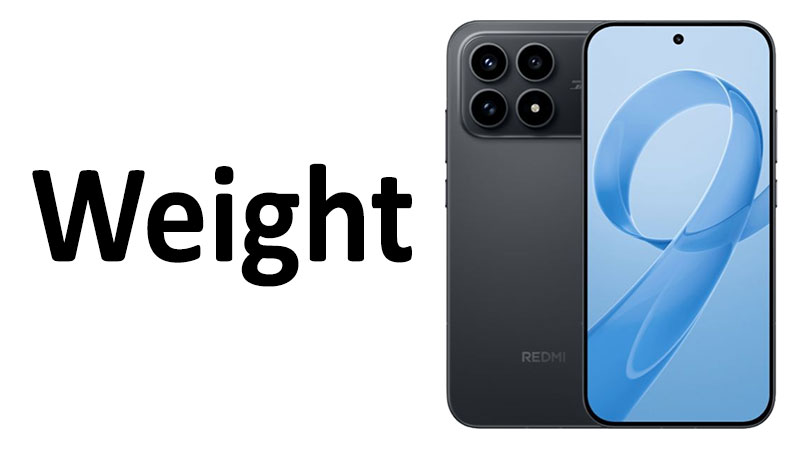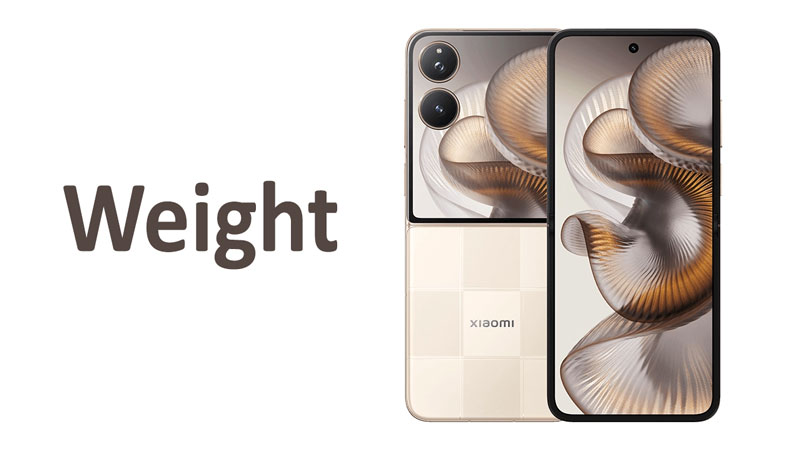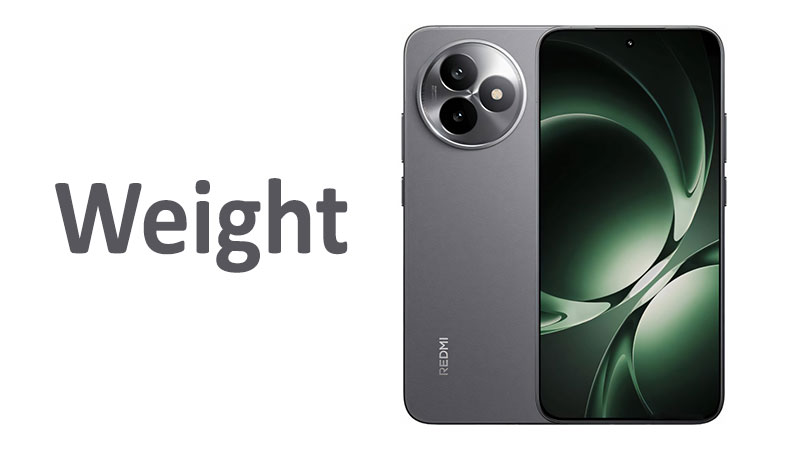Xiaomi Redmi K90 weight is a critical specification for many consumers. The feel and handling of a flagship smartphone depend heavily on its mass. This comprehensive guide dissects the exact weight of the Xiaomi Redmi K90. We analyze its impact on ergonomics and user experience. We will explore how its mass compares to competitors. Understanding the weight helps buyers make informed purchasing decisions. This is especially true for those who use their phone constantly. The Xiaomi Redmi K90 sets a new benchmark in device feel.
Understanding the Xiaomi Redmi K90 Weight
The mass of a smartphone reflects deep engineering choices. It is not just a random number. Every gram is calculated based on materials, battery, and cooling systems. For the Xiaomi Redmi K90, the total weight is a key characteristic. We must break down this number into common measurements. This provides a clear context for global buyers.
The Exact Measurements: Grams and Ounces
The official stated weight for the Xiaomi Redmi K90 is 206 grams. This figure is specific and accurate. It defines the phone’s bulk and density. We must also translate this figure for readers in imperial measurement regions.
In ounces, 206 grams translates to approximately 7.27 ounces. This dual measurement is important. It ensures that all prospective buyers fully grasp the physical presence of the device. A phone weighing over 200 grams is generally considered substantial. It offers a premium, solid feel in the hand.
The 206-gram mark places the K90 firmly in the heavyweight class. This class includes many modern flagship devices. These devices often prioritize large batteries and complex camera systems. Therefore, the weight is often justified by powerful internal components. Consumers often expect this level of heft in a high-performance phone.
Why Weight Matters in Smartphone Design
Weight directly influences the daily user experience. A heavy phone can cause hand fatigue during extended use. This is a crucial factor for mobile gamers. It also affects users who spend hours scrolling through content.
Conversely, some weight is beneficial. A phone that is too light can feel cheap or insubstantial. The weight of the K90 suggests high-quality construction. It often implies the use of durable materials like glass or metal. These materials contribute to a perceived sense of quality.
Weight also ties directly into balance. The distribution of the 206 grams is essential. If the mass is concentrated at the top, it can feel top-heavy. This affects stability when taking photos. Good engineering ensures the weight is evenly distributed. This makes the phone feel more manageable than the raw number suggests.
The overall dimensions also influence how the weight is perceived. A large phone can handle 206 grams more easily. The weight is spread over a bigger surface area. This reduces the apparent density. The Xiaomi Redmi K90’s form factor helps mitigate its substantial mass.
Specialized Weight Comparisons and Ergonomics
Comparing the Xiaomi Redmi K90 weight with other devices is crucial. This provides valuable market context. It helps potential buyers benchmark the K90’s ergonomic profile. We look at direct lineage and market rivals for a balanced view.
Redmi K90 vs. Previous K-Series Models
The K-series has historically focused on performance value. This often involves large batteries. Earlier models, like the hypothetical Redmi K80, might have aimed for a slightly lower mass. For instance, the K80 could have weighed closer to 195 grams.
The jump to 206 grams for the Redmi K90 suggests a significant upgrade. This increase likely funds a bigger battery unit. It may also accommodate a larger vapor chamber cooling system. Advanced cooling is necessary for high-end processors. These processors generate more heat under load.
Therefore, the extra 11 grams over its predecessor is a trade-off. Users gain peak performance and longer battery life. However, they sacrifice a minor degree of lightness. This specialized comparison shows a shift in design priority. The focus moves towards sustained power over minimal weight.
The K90 maintains a modern flagship density. It ensures structural integrity. Older, lighter phones sometimes felt flexible under pressure. The 206-gram K90 offers superior rigidity. This provides peace of mind regarding long-term durability.
K90 Weight Comparison with Key Competitors
Flagship smartphones today generally fall between 180 grams and 240 grams. The 206-gram Xiaomi Redmi K90 sits comfortably in the middle. This positioning is strategically sound. It avoids the extremes of the market.
For instance, some super-premium phones exceed 220 grams. These devices often feature stainless steel frames. They also have huge battery capacities. The K90 is significantly lighter than these ultra-heavy options. This makes it more practical for daily portability.
Conversely, some competitors prioritize a light build. They might weigh around 185 grams. These lighter phones often compromise on battery capacity. They also sometimes use less premium plastic frames. The K90’s mass ensures it retains a premium feel. It avoids the compromises associated with ultra-light devices.
The 7.27 ounces of mass is competitive. It strikes a fine balance between heft and usability. Competitors may be slightly lighter. However, the K90 often justifies its weight with superior cooling hardware. This hardware is vital for sustained gaming sessions.
The Hand Feel and Long-Term Comfort
Ergonomics extends beyond the raw weight number. The hand feel of the K90 is influenced by its mass, thickness, and material finish. A matte finish can improve grip. This makes the 206 grams feel more secure.
The 7.27 ounces can initially feel heavy. However, users quickly adapt to a phone’s mass. The weight provides a reassuring presence in the pocket or hand. It makes the device less likely to slip out accidentally. This is an overlooked benefit of a heavier construction.
Long-term comfort is a crucial consideration. The weight distribution is key here. If the weight is centered, one-handed use remains feasible. If the center of gravity is too high, the phone becomes difficult to balance. This necessitates using two hands more often.
The K90’s weight is tied to its battery size. A larger battery requires less frequent charging. This reduces the time the user spends tethered to an outlet. Therefore, the weight trade-off enhances overall usage convenience. A heavy phone with long battery life offers better overall utility.
The Engineering Trade-Offs: Components and Mass
Achieving the perfect smartphone weight is an act of engineering compromise. Every component adds mass. The final 206 grams are the result of balancing user needs against physical constraints. We examine where the bulk in the Redmi K90 originates.
Battery Size and Its Impact on Mass
The single largest contributor to a modern smartphone’s weight is the battery. Battery technology relies on dense chemical components. Increasing capacity directly increases the mass. A phone weighing 206 grams suggests a very large cell.
The Xiaomi Redmi K90 likely features a battery capacity of 5,000 mAh or more. This large cell size is crucial for flagship endurance. It supports the powerful processor and bright display. High refresh rate screens consume substantial power.
The weight increase from a large battery is unavoidable. However, this bulk is a positive feature for many. Users prioritize a full day of use. They accept the slight increase in ounces and grams. The weight directly translates into freedom from power outlets. This is a practical, functional advantage of the 206-gram device.
A smaller, lighter battery would reduce the mass. However, it would compromise the user experience significantly. Xiaomi engineers chose to prioritize uptime. This decision results in the substantial, but beneficial, 7.27-ounce mass.
Build Materials: Glass, Metal, or Polymer
The external casing and internal frame also contribute heavily to the final weight. High-end phones often use aluminum or stainless steel frames. These metals are durable and rigid. They also add considerable mass.
The 206 grams suggest the K90 utilizes premium construction materials. It likely features an aluminum alloy mid-frame. This provides structural integrity against drops. The back panel is probably made of durable glass. Glass surfaces are heavier than polycarbonate.
The choice of materials ensures a premium tactile experience. The cold, dense feel of metal and glass communicates quality. This is preferable to the lightweight, plastic feel of budget devices. The Xiaomi Redmi K90 weight confirms its high-tier build quality.
Furthermore, internal shielding for 5G components adds mass. The cooling vapor chamber, critical for thermal management, is another heavy element. These essential internal components push the phone past the 200-gram threshold. This is a necessary weight for a high-performance 5G device.
Camera Module Contribution
Modern smartphone camera systems are complex and weighty. Flagship phones like the K90 feature large sensors and multiple lenses. These components add concentrated mass to the device. The camera bump is often the thickest part of the phone.
Optical image stabilization (OIS) mechanisms also contain moving magnets and coils. These elements increase the weight slightly. The entire camera module assembly represents a significant fraction of the 206 grams. This bulk is a function of photographic capability.
If the Xiaomi Redmi K90 had a smaller, simpler camera, it would be lighter. A less capable camera would certainly reduce the final grams. However, users demand excellent photography features. Therefore, the 7.27 ounces reflect a commitment to high-quality imaging.
The placement of the camera module affects the balance. If it is too far off-center, the phone can wobble. Engineers must carefully distribute other internal components. This ensures the 206 grams feel balanced in the hand. The K90 is designed for a stable grip, even with its heavy camera array.
Pros and Cons of the 206-Gram Build
Every design choice involves trade-offs. The specific Xiaomi Redmi K90 weight of 206 grams brings both advantages and disadvantages. Understanding these points helps buyers set proper expectations. We explore the benefits and drawbacks of this mass.
Advantages of the Weight Profile
The most immediate benefit is the premium, robust hand feel. A 206-gram phone feels solid and well-constructed. This avoids the cheap, hollow feeling of lighter devices. The weight assures the user of its durability.
The mass correlates directly with a larger battery. This is a huge practical benefit. Users get longer screen-on time. They can go longer between charges. This battery life advantage often outweighs the slight extra bulk. The long endurance is a key selling point.
Heavier phones generally feature more effective cooling solutions. The extra mass provides a larger thermal sink. This helps dissipate heat generated by the powerful processor. Sustained performance remains high during demanding tasks. Gaming is smoother and more consistent on the K90.
The weight also suggests robust protection. The use of dense materials like specialized glass increases durability. The phone is less likely to suffer critical damage from minor drops. The overall structural integrity is high.
Disadvantages and Potential Drawbacks
The primary drawback is the potential for hand fatigue. Holding 206 grams for extended periods can be tiring. This is a concern for binge-watchers or frequent commuters. One-handed operation can become challenging over time.
The thickness is often a corollary of the weight. A heavier phone is usually thicker to accommodate the battery. This can make the K90 feel bulky in tighter pockets. The profile of the phone is less streamlined than ultra-thin models.
The substantial 7.27 ounces also increases the risk of damage upon impact. Momentum is higher with a heavier object. When dropped, the impact force is greater. This can lead to more severe damage to the screen or frame. A protective case is highly recommended.
Furthermore, some users simply prefer a lightweight device. They prioritize ease of carrying above all else. For these users, the Xiaomi Redmi K90 weight might be a deterrent. Its heft is a known characteristic that must be accepted. Buyers need to weigh their personal preferences carefully.
Important Points for Buyers
Prospective buyers must consider their personal usage habits. If you value battery life and sustained performance, the 206 grams is a positive indicator. The weight signifies superior internals. This includes the battery and cooling systems.
However, if you have smaller hands, try holding the phone first. Assess the comfort level during a prolonged demo session. Use a store model for a few minutes. Check if the 7.27 ounces creates immediate fatigue. This pre-purchase check is essential for ergonomics.
Always factor in the weight of a protective case. Most users add a case for drop protection. A typical case can add 20 to 40 grams of additional mass. This pushes the total carry weight to well over 230 grams. The total package mass is the true daily carry weight.
Consider accessories that may mitigate the weight. A phone grip or pop-socket can improve one-handed balance. They help manage the substantial mass of the K90. These accessories redistribute the weight across your hand. This reduces the strain on your fingers. The total Xiaomi Redmi K90 weight is a feature, not a flaw, for its target demographic.
Conclusion
The Xiaomi Redmi K90 weight of 206 grams (7.27 ounces) is a defining characteristic. It firmly places the device in the premium flagship category. This weight is not a negative point. Instead, it reflects significant investment in key performance areas.
The substantial mass is directly linked to an extended battery life. It also indicates a robust and efficient cooling system. These features ensure peak performance and superior endurance. The 206-gram build offers a solid, premium feel. This assures the user of the phone’s high-quality materials.
While the weight may cause minor hand fatigue for some, the trade-off is worthwhile. The K90 offers a powerful, durable, and long-lasting mobile experience. The weight is a necessary compromise for modern flagship features. It remains competitive against other heavyweights in the market.
Ultimately, the K90 is ideal for users who prioritize power and longevity. They will appreciate the features that the 7.27 ounces enables. If you are seeking a featherlight phone, this might not be the best choice. For those seeking sustained excellence, the Xiaomi Redmi K90 weight confirms its status as a top performer.
FAQ
Does the Xiaomi Redmi K90 weight affect one-handed use?
Yes, the 206-gram mass makes one-handed use challenging for some. Users with smaller hands may find it difficult to maintain a secure grip over long periods.
What is the exact weight of the Xiaomi Redmi K90 in ounces?
The exact weight of the Xiaomi Redmi K90 is 7.27 ounces. This is equivalent to 206 grams, the metric measurement.
Why is the Redmi K90 heavier than some other smartphones?
The K90 is heavier due to its large battery cell and premium construction. It uses dense materials like glass and metal. It also includes an advanced cooling system.
Does the weight of the phone indicate a large battery?
Yes, a phone weighing 206 grams almost certainly features a large battery. The battery is the heaviest single component in most modern smartphones.
Should I buy a lighter phone if I often feel hand strain?
If you frequently experience hand strain, you might consider a lighter device. Alternatively, you can use accessories like grips or ring holders to manage the 7.27-ounce mass.



